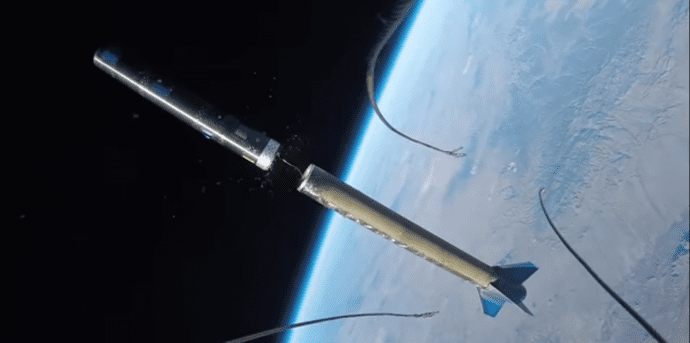Watch this awesome video of GoPro capturing a stunning footage from a rocket
GoPro has just released some truly astonishing footage of a suborbital rocket launch that witnessed a SpaceLoft-10 rocket carry two cameras to 396,405 feet at speeds as high as Mach 5.5 (3,800 mph or 6,115 km/h).
Commenting on the mission, Paul De Leon, NASA Flight Opportunities Program campaign manager said, “We had a great launch, all the payloads were exposed to the relevant environments that the researchers were seeking.”
The 20-foot tall SpaceLoft-10 rocket from Colorado-based launch provider UP Aerospace was launched from Spaceport America in New Mexico on November 6, 2015. However, GoPro only released the footage this week. The mission was the company’s fourth mission for NASA’s Flight Opportunities Program, which selects “promising new space technologies from industry, academia and government, and provides them access to relevant environments for flight testing.”
As the rocket leaves the launch platform, it immediately starts spinning rapidly, a common strategy that helps steady the vehicle as it speeds towards space. This is known as spin-stabilization. Like a spinning top, motion about one axis on a rocket can be controlled if it’s spinning fast enough.
At the 1:17 mark in the video, the 11-pound re-entry capsule known as Maraia successfully separates from the launch vehicle before beginning its journey back to terra firma.
Designed and built by NASA’s Johnson Space Flight Center, the Maraia capsule starts to enter the Earth’s atmosphere around the 2:38-minute mark and safely touches down at the end of the video.
NASA has tested the entry, descent and landing capabilities for the Maraia Earth-return capsule with the suborbital launch. In a press release, NASA stated that the capsule is expected to become an “inexpensive, autonomous International Space Station-based vehicle to provide on-demand return of small scientific and engineering payloads.”
“The new payload deployment capability from UP Aerospace was successfully demonstrated, opening the opportunity for future entry, descent and landing technologies to be tested and matured under Flight Opportunities,” added Leon.
In addition to testing the Maraia capsule, the UP Aerospace mission included four technology experiments from NASA Ames Research Center, Purdue University and New Mexico State University.
All experiments and the Maraia capsule were recovered unharmed on the U.S. Army White Sands Missile Range.
Check out the actual video footage below.

